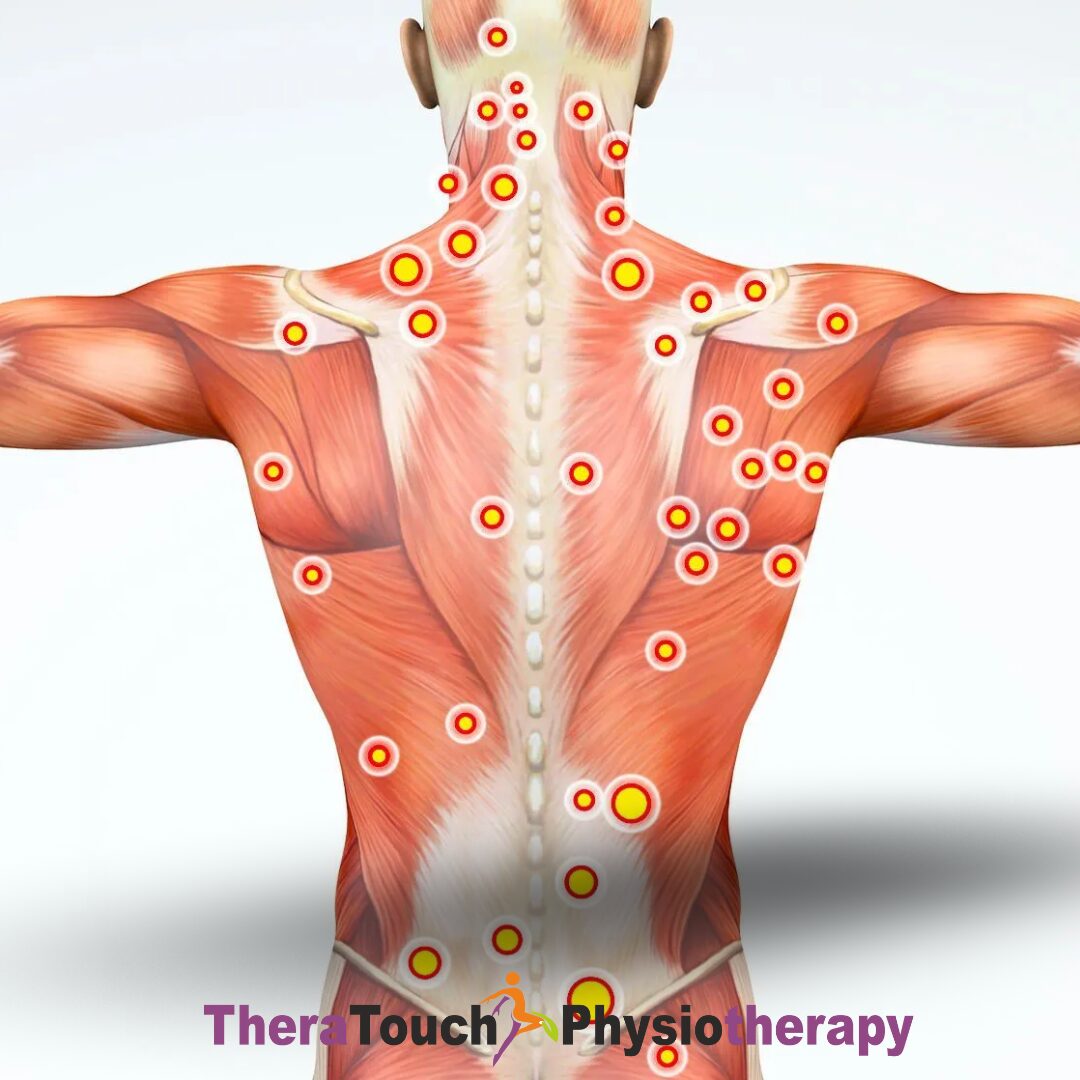Myofascial Pain Syndrome:
Imagine waking up every morning with a dull ache spreading across your shoulders, or feeling a band of tightness wrapping around your back after hours at a desk. The pain is not sharp enough to send you rushing to the emergency room, but it lingers, disrupts sleep, and drains joy from everyday activities. This is the reality of Myofascial Pain Syndrome (MPS) is a condition where muscles form painful knots called trigger points that simply will not release on their own. Millions of people live with it, yet many go undiagnosed because the pain feels ordinary at first, until it grows into a constant burden.
Understanding What Makes Myofascial Pain Syndrome Unique
Myofascial Pain Syndrome is not like a pulled muscle that heals after a week of rest. It develops when parts of a muscle remain in a constant state of contraction. These tight spots reduce blood flow, trap waste products, and irritate the nerves, creating localized pain that often radiates to other areas. A knot in the neck can cause headaches, while tension in the lower back may trigger hip or leg discomfort. What makes MPS especially challenging is this “referred pain,” which tricks both patients and doctors into looking for problems where none exist.
Why Muscles Rebel
The reasons muscles develop chronic knots are varied, but they often start with small, unnoticed habits. Hours spent sitting at a computer without adjusting posture, carrying heavy bags on the same shoulder, or training too aggressively at the gym all overload the muscles until they no longer recover properly. Stress acts as fuel for the condition, since emotional tension leads to unconscious tightening of the body. Injuries can also set the stage, locking certain muscles into protective spasms that never fully switch off. Over time, these tight spots spread, creating a web of discomfort that feels impossible to escape.
The Toll on Daily Life
Living with MPS does not just mean dealing with pain. It changes how people move, work, and interact. Someone with chronic neck tension may avoid turning their head fully, eventually developing stiffness and poor posture. Sleep becomes shallow because lying down presses on tender points. Even simple joys like playing with children, driving, or exercising lose their appeal. The emotional cost is high as well, since chronic pain often fuels frustration, anxiety, and feelings of helplessness. What begins as “muscle tightness” can eventually reshape a person’s entire lifestyle.
Why Diagnosis Often Takes Years
Because Myofascial Pain Syndrome is not visible on X-rays or blood tests, patients are often told nothing is wrong. Some are treated for arthritis or nerve conditions, only to find their symptoms persist. Diagnosis depends heavily on skilled hands; a healthcare professional pressing into the muscle and feeling the knot, then noting how the pain shoots to another region. This clinical skill means MPS is frequently missed or underestimated, leaving sufferers in limbo.
Why Physiotherapy Changes the Story
The good news is that MPS responds remarkably well to physiotherapy. Unlike medication, which masks symptoms temporarily, physiotherapy addresses the dysfunction at its source. A physiotherapist can release trigger points through manual techniques such as myofascial release or dry needling, which deactivate knots and restore normal circulation. Gentle stretching programs retrain the muscles to lengthen fully, while strengthening exercises correct imbalances that caused overuse in the first place. Postural training ensures that everyday activities, sitting at a desk, lifting objects, or even standing no longer strain the body.
Beyond the physical interventions, physiotherapy introduces relaxation and breathing techniques that tackle the stress component of MPS. Patients learn how to notice when they are unconsciously tightening their muscles and how to interrupt the cycle before it spirals into pain. Unlike quick fixes, this approach not only relieves symptoms but also builds long-term resilience.
The Questions Patients Ask Most
People often wonder whether Myofascial Pain Syndrome will last forever. The truth is that it does not have to. With proper physiotherapy and lifestyle adjustments, many patients experience dramatic improvements or complete resolution. Another question is whether exercise helps or harms. While unguided exertion can irritate trigger points, targeted physiotherapy-led programs rebuild muscle health without worsening pain. Many also ask if MPS is the same as fibromyalgia. They are related but distinct: fibromyalgia involves widespread pain across the nervous system, while MPS is rooted in localized muscle dysfunction.
Taking Back Control
Myofascial Pain Syndrome can feel like a trap, but it is not permanent. With physiotherapy, patients can move from a life of restricted motion and lingering discomfort to one of strength, flexibility, and control. The transformation is not only physical but also emotional, as pain no longer dictates daily choices. Physiotherapy does more than treat symptoms; it restores agency. For anyone living under the weight of chronic muscle knots, seeking physiotherapy is not just a treatment option it is a chance to reclaim movement, confidence, and quality of life.

